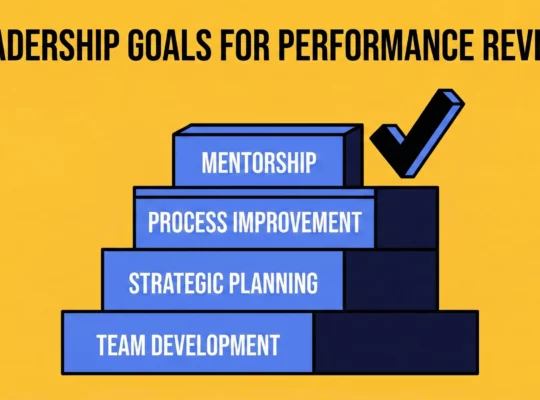Onboarding remote employees effectively is critical for maintaining productivity and morale in today’s increasingly virtual work environment. At Review.jobs, we recognize the importance of creating a seamless and engaging onboarding process. With 23.7% of the US population working from home and 99% expressing a desire to continue remote work, a strong onboarding strategy is essential.
A negative onboarding experience can lead to high turnover, with 64% of employees considering leaving their new job within the first year if the experience is poor. In fact, 74% of employees describe their onboarding as boring, 66% as confusing, and 64% as a failure. These numbers highlight how onboarding, a crucial step in an employee’s journey, is often overlooked by companies. But rest assured, this guide offers a solution – a comprehensive roadmap to ensure your remote employees have a positive and productive start from day one.
Table of Contents:
1. Pre-Onboarding Preparations
2. Day One Essentials
3. Building Connections
4. Training and Development
5. Culture and Expectations
6. Feedback and Improvement
1. Pre-Onboarding Preparations
Early Engagement
Communicate with the new hires before their start date to make them feel welcome and informed. Send them welcome packages with company swag and provide access to preliminary onboarding materials to familiarize them with the company culture and expectations.
Technology Setup
Ensure that all necessary tech equipment is sent and configured before the start date. Schedule IT orientation sessions to grant software and tool access, ensuring that the new hire can begin working without technical difficulties.
By leveraging technology to enhance the onboarding experience, employee engagement can be improved, and HR managers can save 14 hours per week by automating their processes
Internal Team Preparation
Inform existing team members about the new hire to foster a welcoming environment. Assign a mentor or buddy to help guide the new employee through their initial days and answer any questions they may have.
2. Day One Essentials
Orientation
- Virtual Orientation Session
- Welcome Presentation: Start with a welcoming presentation by HR or a senior leader to make the new hire feel valued and excited about joining the company.
- Company Culture: Discuss the company’s culture, including its values, mission, and vision. Explain how these elements influence day-to-day operations and long-term strategies.
- Organizational Structure: Provide an overview of the company’s organizational structure, including key departments and their functions. Highlight how different teams collaborate and contribute to the company’s success.
- Products and Services: Introduce the company’s products and services, explaining their unique selling points, target markets, and the value they bring to customers.
- Key Policies and Procedures: Review essential company policies, such as code of conduct, remote work guidelines, cybersecurity measures, and any other relevant procedures. Ensure the new hire understands the importance of these policies and how to adhere to them.
- Interactive Components
- Q&A Session: Allow time for the new hire to ask questions and clarify any doubts. This helps in making the session interactive and informative.
- Engaging Materials: Use engaging materials such as videos, infographics, and slide decks to make the orientation session more interesting and easier to understand.
Team Introduction
- Video Introductions
- Key Team Members: Schedule short video calls with key team members and stakeholders. These introductions should include direct supervisors, team leads, and any colleagues the new hire will work closely with.
- Personal Introductions: Encourage each team member to introduce themselves, share their role, and how they collaborate within the team. This helps the new hire understand the team dynamics and build initial connections.
- Virtual Team Lunch or Coffee Chat
- Informal Interaction: Organize an informal virtual team lunch or coffee chat. This relaxed setting allows the new hire to interact with colleagues without the pressures of work discussions.
- Ice-Breaker Activities: Incorporate ice-breaker activities to facilitate conversation and make the new hire feel comfortable. Examples include fun facts, two truths and a lie, or a short quiz about team members.
- Encouraging Inclusion: Ensure all team members participate and make an effort to include the new hire in conversations. This helps foster a sense of belonging and community from the very first day.
3. Building Connections
Creating a Sense of Belonging
- Informal Interactions through Communication Platforms
- Slack Channels: Utilize Slack or similar communication platforms to create dedicated channels for informal interactions. These channels can include topics like #sports, #random, #pets, or any other interest-based channels where employees can share and engage in non-work-related conversations.
- Daily or Weekly Check-Ins: Implement daily or weekly informal check-ins through messaging platforms to keep the new hire engaged and informed about the team’s activities and updates.
- Encourage Interaction: Encourage existing team members to actively engage with the new hire in these informal channels. This helps break the ice and fosters a sense of inclusion and camaraderie.
- Virtual Social Events and Team-Building Activities
- Virtual Happy Hours: Organize virtual happy hours where team members can relax, share stories, and enjoy casual conversations over their favorite drinks.
- Online Games and Activities: Plan online games and activities such as trivia, virtual escape rooms, or collaborative games that require teamwork and communication.
- Themed Events: Host themed events, like virtual costume parties or holiday celebrations, to add fun and excitement to the team dynamics.
- Cultural Celebrations: Acknowledge and celebrate cultural events and holidays from different parts of the world, making the new hire feel valued and included regardless of their background.
Formal and Informal Touchpoints
- Regular Check-Ins with Managers and Team Leads
- Scheduled Meetings: Schedule regular one-on-one meetings between the new hire and their manager to discuss progress, address concerns, and provide guidance. These meetings can be weekly during the initial onboarding phase and then bi-weekly or monthly as the new hire settles in.
- Performance Feedback: Use these check-ins to provide constructive feedback and recognize achievements. This helps the new hire understand their performance and areas for improvement.
- Goal Setting: Collaboratively set short-term and long-term goals with the new hire to give them a clear direction and a sense of purpose within the company.
- Informal Video Calls for Casual Interactions
- Coffee Chats: Arrange informal video calls, often referred to as “virtual coffee chats,” where the new hire can have casual conversations with team members. These chats are not work-focused but rather an opportunity to get to know each other personally.
- Buddy System: Implement a buddy system where the new hire is paired with a more experienced team member who can provide support, answer questions, and help them navigate the company culture.
- Team Lunches: Organize virtual team lunches where everyone can join a video call during their lunch break to share a meal and engage in light-hearted conversations.
- Open Door Policy: Encourage an open door policy where the new hire feels comfortable reaching out to managers or colleagues for casual chats or to seek advice outside of formal meetings.
4. Training and Development
Structured Onboarding Plans
Develop a 30/60/90-Day Plan with Clear Milestones and Objectives
Creating a 30/60/90-day plan with clear milestones and objectives is essential for guiding new hires through their initial months. This structured approach breaks down the onboarding process into manageable phases, each with specific goals and tasks. In the first 30 days, focus on familiarizing the new hire with the company’s operations, tools, and team members. The next 30 days should involve deeper engagement with their role and responsibilities, while the final 30 days concentrate on achieving independence and contributing to team projects. This method ensures that new employees have a clear roadmap to follow, which can help reduce anxiety and boost confidence.
Provide Access to Online Training Modules and Resources
Offering access to online training modules and resources is a critical component of effective onboarding. These resources should cover a wide range of topics, from company policies and procedures to specific job-related skills. Interactive and engaging training modules can help new hires absorb information more effectively. Make sure these resources are easily accessible, allowing employees to learn at their own pace and revisit materials as needed. This approach not only enhances the onboarding experience but also promotes a culture of continuous learning and development.
Continuous Learning
Encourage Professional Development Through Online Courses and Certifications
Encouraging professional development through online courses and certifications can significantly benefit both employees and the company. Provide opportunities for new hires to enroll in relevant courses that enhance their skills and knowledge. These courses can range from technical skills to soft skills such as leadership and communication. By supporting continuous learning, the company demonstrates its commitment to employee growth and career advancement, which can lead to higher job satisfaction and retention.
Set Up Collaborative Learning Projects and Cross-Departmental Training
Setting up collaborative learning projects and cross-departmental training sessions can enhance the onboarding process by fostering teamwork and knowledge sharing. Assign new hires to projects that require collaboration with colleagues from different departments. This exposure helps them understand various aspects of the company and build a broader network. Cross-departmental training sessions can also provide insights into how different teams operate and how their work aligns with overall company goals. These initiatives promote a holistic understanding of the organization and encourage a collaborative work culture.
5. Culture and Expectations
Explaining Company Culture
Make Unspoken Norms and Expectations Explicit
Clearly articulating the company culture and making unspoken norms and expectations explicit is essential for new hires. Company culture encompasses the values, behaviors, and social dynamics that define the workplace environment. While some aspects may seem obvious to seasoned employees, new hires need explicit guidance to understand and align with these norms.
For instance, if the company values open communication and collaboration, make it clear how this translates into everyday interactions and decision-making processes. Providing this clarity helps new employees integrate smoothly and confidently into the team.
Assign a Culture Buddy to Help the New Hire Navigate Company Dynamics
Assigning a culture buddy to each new hire can significantly enhance their onboarding experience. A culture buddy is a colleague who is well-versed in the company’s ethos and can help the new hire navigate its dynamics. This person acts as a go-to resource for any questions about the unwritten rules and social norms within the organization. Having a culture buddy fosters a sense of belonging and support, enabling the new hire to acclimate more quickly and effectively to the workplace environment.
Setting Clear Expectations
Define Roles, Responsibilities, and Performance Goals
Defining roles, responsibilities, and performance goals from the outset ensures that new hires have a clear understanding of what is expected of them. Start by providing a detailed job description that outlines their primary duties and any ancillary tasks they might need to undertake. Clearly communicate performance goals, including key performance indicators (KPIs) and specific targets they need to achieve. This clarity helps new employees focus on their priorities and understand how their work will be evaluated, which is crucial for their success and confidence.
Connect the New Hire’s Work to Broader Organizational Goals and Missions
Connecting the new hire’s work to the broader organizational goals and missions is vital for fostering a sense of purpose and motivation. Explain how their specific role contributes to the company’s overarching objectives and mission. For example, if the company’s mission is to innovate in the tech industry, show how the new hire’s projects and tasks are pivotal to driving this innovation. This connection not only enhances their understanding of their impact but also boosts engagement and commitment to the organization’s success.
6. Feedback and Improvement
Enhancing Onboarding with Review.jobs
Conduct Regular Feedback Sessions and Collect Employee Reviews
Conducting regular feedback sessions is crucial for monitoring and improving the onboarding progress. Schedule these sessions frequently during the initial months to discuss the new hire’s experiences, challenges, and achievements. This proactive approach not only helps new employees feel supported but also allows managers to address any issues promptly, ensuring a smoother transition and higher satisfaction.
Utilizing employee review platforms like Review.jobs can significantly streamline this feedback process. These platforms facilitate structured feedback collection, making it easier for managers to track progress and identify trends. Consequently, new employees feel more supported, and managers can promptly address any issues, ensuring a smoother transition and higher satisfaction.
Overlooking this practice can hinder the continuous improvement of the onboarding strategies adopted by the company, which eventually will lead to dying employee engagement and even turnover. In fact, 55% of organizations don’t measure onboarding effectiveness.
Implement Changes Based on Employee Reviews
Taking action based on the feedback received is essential for continuously improving the onboarding process. Analyze the feedback from new hires to identify common themes and areas of concern. Implement changes that address these issues, such as refining training materials, adjusting the onboarding timeline, or enhancing communication channels. By making these adjustments, the company demonstrates its commitment to creating an effective and responsive onboarding experience, which can lead to higher employee retention and engagement.
In this sense, Review.jobs plays a pivotal role in this process by providing a centralized system to manage and analyze feedback, ensuring that changes are data-driven and impactful.
Ongoing Support
Continue Mentorship Beyond the Initial Onboarding Period
Extending mentorship beyond the initial onboarding period is vital for providing ongoing support and development opportunities. A mentor can offer guidance, share insights, and help the new hire navigate their evolving role within the company. Regular check-ins with the mentor ensure that the employee continues to receive the support they need as they take on more responsibilities. This long-term mentorship helps build confidence, fosters professional growth, and strengthens the relationship between the new hire and the organization.
Foster an Environment of Open Communication and Support
Creating an environment of open communication and support is essential for maintaining a positive and productive workplace. Encourage employees to share their thoughts, ideas, and concerns without fear of judgment. For this purpose, provide a safe employee review channel where employees can share their honest onboarding experience anonymously.
Improving internal communication helps foster a culture of trust and openness, and drives engagement. This environment not only benefits new hires but also contributes to a healthier, more collaborative workplace for everyone. For more about this topic, check out our comprehensive guide on How to Collect Anonymous Feedback: Best Practices and Tools.
Onboarding remote employees effectively involves several essential steps: pre-onboarding preparations, day-one essentials, building connections, structured training, and continuous feedback. Creating a welcoming and productive remote work environment requires thoughtful planning and consistent communication. By implementing a structured yet flexible onboarding process, companies can foster a positive onboarding experience that enhances employee engagement and retention.
A well-executed onboarding program not only benefits the new hires but also strengthens the overall employer image. Ensuring new employees feel supported and valued from the start can lead to higher job satisfaction and productivity. By prioritizing these steps, your company can build a strong foundation for remote team members.
For more insights and resources on successful onboarding practices, visit Review.jobs.





